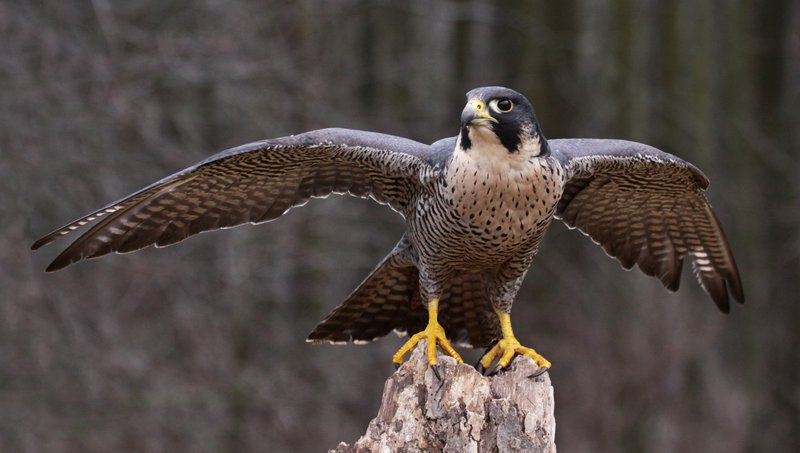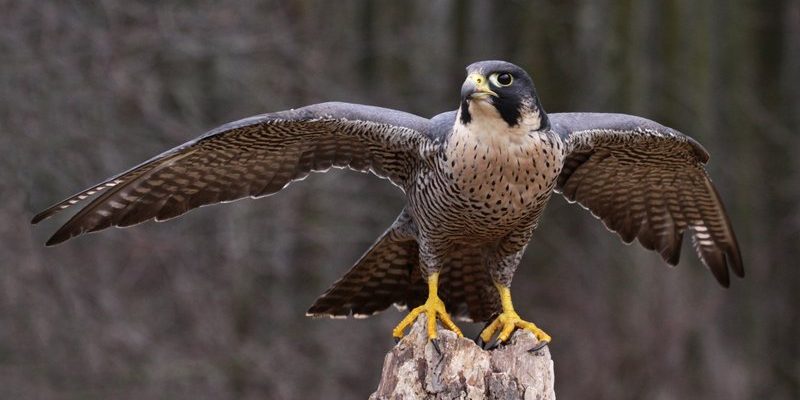
Peregrine falcons are known for their stunning beauty and incredible hunting skills. Think of them as the Formula One race cars of the bird world—fast, sleek, and built for speed. When you know what to look for, spotting them can be a thrilling experience. However, if you don’t have a few key characteristics in mind, they can be tricky to identify among other birds of prey. Let’s dive into how to recognize these amazing birds!
Understanding The Basics: What Is A Peregrine Falcon?
Peregrine falcons, scientifically known as *Falco peregrinus*, are large birds of prey popular for their remarkable speed and distinct appearance. They can reach speeds of over 240 miles per hour when diving to catch prey, making them the fastest animal on the planet!
You might find them in a variety of habitats, including cliffs, urban areas, and open landscapes. These birds are highly adaptable, which is one of the reasons they thrive in diverse environments. They are known to hunt small to medium-sized birds, and their keen eyesight helps them spot prey from great distances.
When thinking about spotting a peregrine falcon, it’s helpful to know that they generally have a wingspan of about 3.3 to 3.6 feet. Their bodies are streamlined, which contributes to their incredible speed.
Key Physical Characteristics
To truly identify a peregrine falcon, you’ll want to focus on their unique physical traits. Here are some key features to look out for:
- Coloration: Adult peregrine falcons exhibit a distinctive blue-grey plumage on their wings and back, with a creamy white breast and belly that is often streaked with brown. This color scheme helps them blend in with their surroundings, making them excellent hunters.
- Facial Markings: One of the most striking features of these birds is their facial markings. They have a characteristic dark “moustache” or “sideburn” pattern that extends from their beak to their ears, which is a key identifier.
- Beak: Their beaks are hooked and powerful, designed to grip and tear into their prey. The size and shape of the beak can help you differentiate them from other birds of prey.
Next time you’re out observing birds, pay attention to these details. They can make the difference between a peregrine falcon and other similar birds.
Behavioral Traits to Note
Besides their physical characteristics, observing a peregrine falcon’s behavior can give you additional clues about their identity. Here’s what to look for:
- Hunting Technique: Peregrine falcons are famous for their unique hunting style. They often dive from great heights to catch prey mid-air. If you notice a bird swooping down dramatically, it could very well be a peregrine.
- Vocalizations: Their calls are sharp and distinct, often described as a series of “kak-kak-kak” sounds. Listening for these calls can be a great way to identify them.
- Social Behavior: During mating season, you might observe them engaging in aerial displays. Males often perform acrobatics to impress their mates, making it a fantastic time to watch for these birds.
By paying attention to these behavior patterns, you’ll enhance your chances of spotting a peregrine falcon in action.
Where to Look for Peregrine Falcons
Knowing where to search can significantly increase your success in spotting a peregrine falcon. They prefer a variety of environments, but certain locations are more promising:
- Cliffs and Tall Structures: Peregrines often nest on high cliffs or ledges, so keeping an eye on steep terrain can pay off. They also love urban areas where they can nest on tall buildings.
- Open Areas: Look for them in fields or along coastlines, where they can easily spot their prey. They often patrol these areas for unsuspecting birds.
- Rivers and Wetlands: These habitats attract smaller birds, which means peregrine falcons are likely nearby. Be sure to scan the skies as you walk along these areas.
Be patient and keep your binoculars handy. The reward of spotting one of these amazing birds is well worth the wait!
Seasonal Considerations
The time of year can make a big difference in your chances of spotting a peregrine falcon. Here’s how seasons can affect your search:
- Spring: Spring is often the best season for spotting peregrine falcons as they return to their nesting sites after migrating. You might catch a glimpse of them caring for their young.
- Summer: As young falcons learn to hunt, you may see them practicing their skills. This can be a thrilling time to observe their development and behavior.
- Fall: Many peregrine falcons migrate south for the winter, so your chances of spotting them can decrease. However, some stay around urban areas, so keep your eyes peeled!
Adjust your birdwatching plans based on the season, and you’ll improve your odds of a memorable sighting.
Tools to Enhance Your Falcon-Spotting Experience
While it’s possible to spot a peregrine falcon with the naked eye, there are some tools that can make your experience even better:
- Binoculars: A good pair of binoculars is essential for birdwatching. Look for ones with at least 8x magnification to get a closer view of these stunning birds.
- Field Guides: A bird identification book or app can be super helpful for learning about peregrine falcons and other birds in your area.
- Notebook: Keep a journal of your sightings. Note the locations, behaviors, and anything interesting you observe. This can help track your progress and enhance your future experiences.
Having the right tools can turn a casual birdwatching trip into an enlightening adventure.
Identifying a peregrine falcon in the wild is not just about knowing the physical characteristics; it’s about soaking in the entire experience of nature. With a little practice and patience, you can become skilled at spotting these incredible birds. Remember to keep an eye out for their unique plumage, distinctive facial markings, and remarkable hunting behaviors.
The thrill of watching a peregrine falcon soar through the sky is a unique joy, one that connects us to the wild world around us. So grab your binoculars, head out to your favorite birdwatching spot, and enjoy the hunt for these magnificent creatures. Happy birdwatching!

